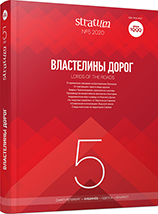«Без дороги из дома нет дороги домой…» (переселенцы с Северного Кавказа в бассейне Северского Донца на этапе становления салтово-маяцкой культуры)
“Without a Road from Home, there is no Road to Home…” (migrants from the North Caucasus in the Seversky Donets basin at the stage of the Saltov-Mayaki culture formation)
Author(s): Victor S. AksonovSubject(s): History, Archaeology, Middle Ages, 6th to 12th Centuries, Migration Studies
Published by: Издательский дом Stratum, Университет «Высшая антропологическая школа»
Keywords: Seversky Donets basin; Early Middle Ages; Saltov-Mayaki culture; Aces; Savirs; Kasogs;
Summary/Abstract: In the complexes of the Stolbishche-Starokorsunskaya horizon (740—780 CE), the Seversky Donets basin is represented by three different sets of personal metal jewelry. These jewelry sets, taking into account the burial places in which they were found, indicate the areas where the owners of these jewelry sets originally lived before they moved to the Seversky Donets basin. For the holders of the catacomb funerary rite (burial grounds near the village of Verkhny Saltov, Stary Saltov, Rubezhnoye) and the population who left the inhumation burial in pits with the eastern orientation of the deceased (Netailovsky burial ground), the initial migration area was the territory of modern eastern Ossetia, Ingushetia, Chechnya. The immigrants who buried their dead in the catacombs belong to representatives of the Eastern Alans — Asams (Avsurks). Burials in soil pits were left by the representatives of the mixed Turkic-Ugric population — Savirs. For the population who left the Saltov cremation burial in the Seversky Donets basib, the initial migration area was in the steppe zone of the western Trans-Kuban region (the 2nd territorial group of cremation burial grounds of the 8th—9th centuries of the Kuban-Black Sea region). Later, immigrants from the Western Alanian population groups, who had previously lived in the Central Ciscaucasia, also came to the Seversky Donets basin.
Journal: Stratum plus. Археология и культурная антропология
- Issue Year: 2020
- Issue No: 5
- Page Range: 139-152
- Page Count: 14
- Language: Russian
- Content File-PDF

